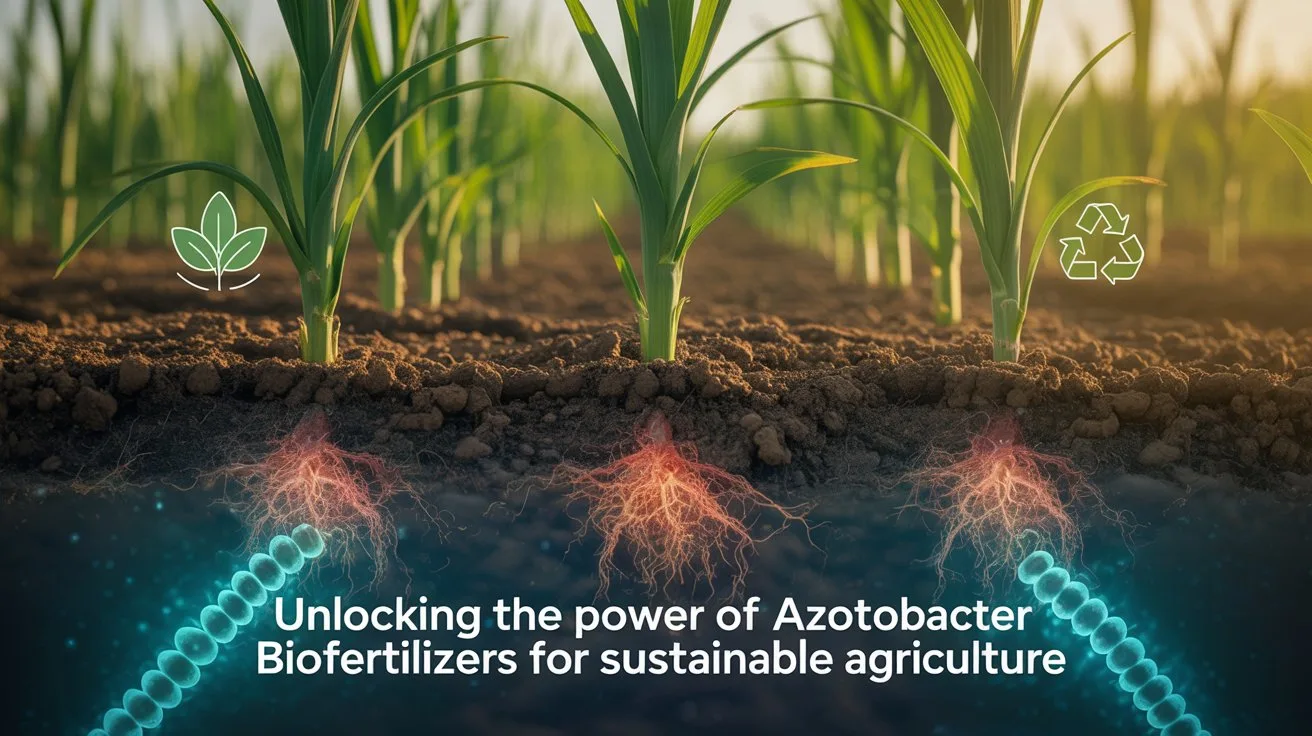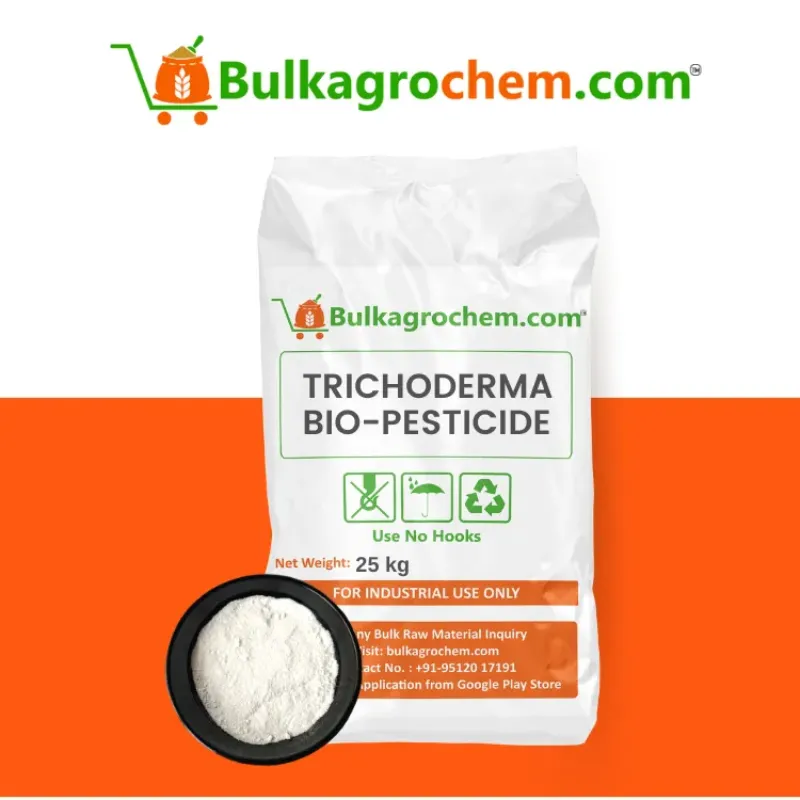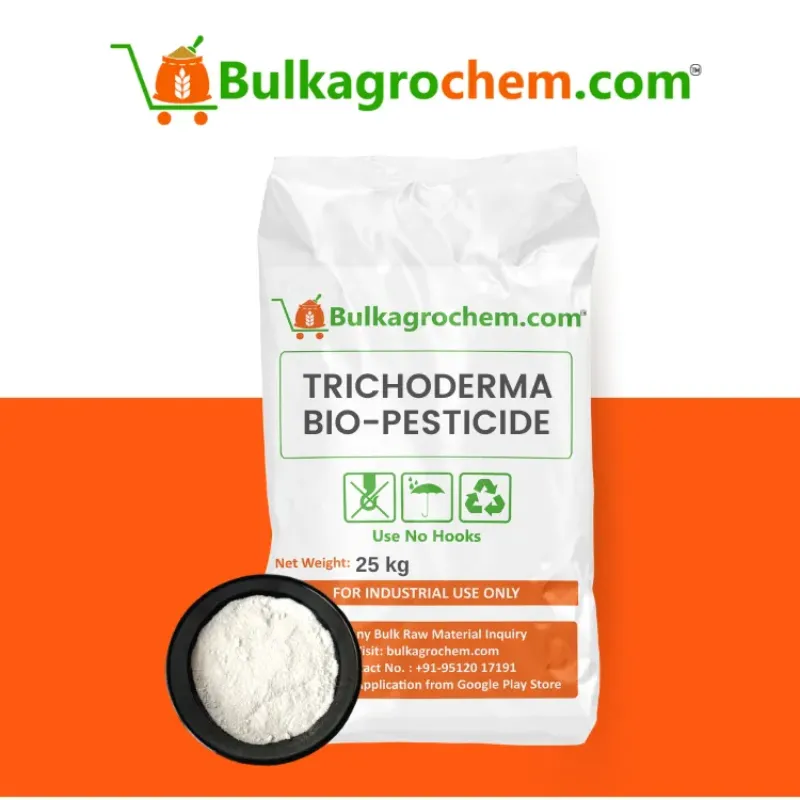Azotobacter biofertilizers are becoming one of the best options for sustainable agriculture. These nitrogen-fixing bacteria will not only enhance soil health and climate change resilience but will also diminish dependency on harmful chemical fertilizers and mitigate worker exposure to toxic products. Azotobacter biofertilizers utilize biological nitrogen fixation, allowing it to replace the synthetic fertilizer and somewhat lessen the harmful effects that synthetic fertilizers provide the environment while maintaining improved crop yield and enhancing soil fertility.
Azotobacter is a free-living bacterium that contributes to the nitrogen fixation process. This improves soil quality by providing organic compounds to soils required to support plant growth. When using a synthetic fertilizer, it will degrade the quality of the soil over time. An Azotobacter fertilizer will contribute a constant input of organic matter and accompanying beneficial microbes that supports soil quality and health.
Introduction: Why Azotobacter Biofertilizers are the Future of Farming
Azotobacter biofertilizers are changing the landscape of agriculture with their eco-friendly, sustainable, and natural approach to nitrogen fixation. Azotobacter and related microorganisms can naturally convert atmospheric nitrogen into a usable form for plants, reducing the need for synthetic fertilizers. Azotobacter biofertilizers are an alternative to synthetic fertilizers, allowing the promotion of soil health and crop yield while minimizing environmental damage from farming practices.
With increasing soil degradation, dependency on chemicals, and climate change impacts, Azotobacter fertilizer is a sustainable and cost-efficient ecosystem approach to sustainable agriculture.
Azotobacter Fertilizer: A Sustainable Solution for Soil Health
Azotobacter is a freeshit tte gwdddbedibg ln nitrogen-reducing bacteria that soil fertility, however, unlike chemical fertilizers that may cause long-term detrimental effects on soil, Azotobacter fertilizer increases the soil organic matter content fundamentally, increases th microbial, and increases - as a whole - hetheirlandelfnvrdiyihdldsgnhsemn heath ratsay hordubd.
- Improved Nitrogen Availability: Azotobacter doesn't use nitrogen fertilizers, since it fixes nitrogen from the atmosphere and reduces reliance on nitrogen fertilizer.
- Soil Enrichment: The addition of Azotobacter means an enhancement of microbial diversity in the soil, and significantly improves soil structure and fertility.
- Reduced Soil Degradation: Azotobacter fertilizer decreases reliance on chemical fertilizer so there is a significant reduction in soil degradation related to reliance on chemical fertilizers.
- Increased Crop Yields: By Increased in soil science over long-term ne fitted from azotbacter bioencils, actually no emissions and no pollution it has the ability to improve soil science quality and availability of nitrogen and naturally increased crop yield..
Liquid Azotobacter Biofertilizer: A Convenient and Efficient Option
Liquid Azotobacter biofertilizer is an easy to use, effective alternative to solid formulations. The liquid form also allows for an improved colonization process in field soils and can be applied with irrigation systems in large scale farming.
- Quick Microbial Activation: Liquid biofertilizers of azotobacters have a more rapid field microbial activation leading to the rapid nitrogen fixation or tuberization process.
- Easy & Flexible Application: Liquid formulations can be applied via drip irrigation, foliar sprays, and as a standalone tank mix. This provides convenience to the formers.
- Better Crop Response: The strong interaction with plant roots improves nutrient uptake from liquid azotobacter biofertilizers and reduces mortality in plant nursery application scenarios.
Eco-Friendly Farming with Azotobacter Fertilizer
Switching to Azotobacter biofertilizers aligns perfectly with sustainable and eco-friendly farming practices. As a natural solution to nitrogen deficiency, Azotobacter biofertilizers help reduce the environmental impact caused by excessive chemical fertilizers, such as water contamination, soil erosion, and greenhouse gas emissions. By improving soil fertility and promoting sustainable farming practices, Azotobacter fertilizer supports the long-term health of the land.
- Reduced Chemical Use: Azotobacter reduces dependency on chemical nitrogen fertilizers, which are known for their harmful environmental effects.
- Soil Health Improvement: Azotobacter promotes the regeneration of soil microbes, increasing its ability to retain nutrients and water.
- Climate Resilience: By promoting soil health, Azotobacter biofertilizers help farms become more resilient to climate change and unpredictable weather conditions.
The Science Behind Azotobacter: How It Works in Soil
Azotobacter is a type of nitrogen-fixing bacterium that plays an essential role in enriching soil and enhancing plant growth. As a free-living microorganism, Azotobacter biofertilizers are not dependent on a specific plant host, unlike rhizobia, and can colonize the rhizosphere of a variety of crops. These bacteria fix atmospheric nitrogen, converting it into a form that plants can utilize for growth and development.
- Nitrogen Fixation: Azotobacter captures nitrogen from the atmosphere and converts it into ammonium (NH₄⁺) through a biochemical process called nitrogen fixation.
- Soil Enrichment: By introducing Azotobacter into the soil, the soil’s nitrogen content increases, which directly benefits the crops by providing a steady supply of nitrogen.
- Soil Health Improvement: In addition to nitrogen fixation, Azotobacter biofertilizers also help improve soil structure, enhance microbial diversity, and encourage the breakdown of organic matter, contributing to long-term soil fertility.
Nitrogen Fixation by Azotobacter
Azotobacter biofertilizers are known for their ability to fix atmospheric nitrogen, a vital nutrient for plant growth. Nitrogen is essential for plants because it is a key component of amino acids, proteins, and chlorophyll. While nitrogen is abundant in the atmosphere, plants cannot directly use it. This is where Azotobacter plays a crucial role.
- Atmospheric Nitrogen Capture: Azotobacter bacteria absorb nitrogen gas (N₂) from the air in the soil.
- Conversion to Ammonium: The nitrogen is then converted into ammonium (NH₄⁺) via the enzyme nitrogenase. This form of nitrogen is readily available for plant uptake.
- Direct Nitrogen Supply: Unlike synthetic nitrogen fertilizers, Azotobacter fertilizer continuously provides nitrogen in a natural and sustainable form, minimizing soil depletion and supporting healthy plant growth.
Enhancing Soil Fertility with Azotobacter Biofertilizers
Azotobacter biofertilizers play a pivotal role in enhancing soil fertility by increasing nitrogen availability, improving microbial activity, and fostering a healthy soil ecosystem. These biofertilizers are particularly beneficial in agricultural systems that seek to reduce chemical inputs while maintaining or improving crop yield.
- Increased Nitrogen Content: The primary benefit of Azotobacter is its ability to fix atmospheric nitrogen, making it accessible for plant use.
- Improved Soil Microbial Activity: Azotobacter helps stimulate the growth of beneficial soil microorganisms, improving soil health and nutrient cycling.
- Organic Matter Decomposition: The presence of Azotobacter aids in the breakdown of organic materials, adding humus to the soil, which improves its structure and water-holding capacity.
Advantages of Azotobacter for Soil Fertility:
- Sustainable nitrogen source without the harmful effects of synthetic fertilizers.
- Improves soil texture and structure, leading to better root penetration and water retention.
- Boosts microbial biodiversity, which supports a healthy and resilient ecosystem in the soil.
Liquid Azotobacter Biofertilizer for Faster Results
While solid forms of Azotobacter fertilizer are widely used, liquid Azotobacter biofertilizers are gaining popularity due to their convenience and rapid efficacy. The liquid formulation of Azotobacter ensures quicker colonization of the rhizosphere, enabling faster nitrogen fixation and improved plant growth, especially in the early stages of crop development.
- Faster Activation: Liquid formulations have an immediate effect, as the microorganisms are already in a hydrated, active form, allowing for rapid colonization of plant roots.
- Ease of Application: Liquid Azotobacter biofertilizers can be applied through irrigation systems, such as drip irrigation or flood systems, which is ideal for large-scale farming.
- Enhanced Nutrient Uptake: The liquid form allows for more efficient nutrient absorption by plants, especially during critical growth stages like germination and seedling development.
- Higher Microbial Activity: Liquid formulations tend to have a higher concentration of active microorganisms, which accelerates soil fertility enhancement.
The Benefits of Using Azotobacter Biofertilizers for Crops and Soil Health
Azotobacter biofertilizers are a powerful tool in sustainable farming, providing numerous benefits to both crops and soil health. These biofertilizers are especially beneficial for farmers looking to reduce reliance on synthetic chemicals while enhancing soil fertility and improving crop yields.
Improved Crop Yield and Soil Fertility with Azotobacter Fertilizer
Azotobacter: A Sustainable Alternative to Chemical Fertilizers
Azotobacter offers a sustainable and eco-friendly alternative to chemical fertilizers. The environmental impact of conventional chemical fertilizers, such as water contamination and greenhouse gas emissions, can be significantly reduced by integrating Azotobacter into farming practices.
Advantages Over Chemical Fertilizers:
- Reduced Chemical Dependency: Azotobacter provides a natural, long-term nitrogen source, reducing or even eliminating the need for synthetic fertilizers.
- Environmentally Friendly: Unlike chemical fertilizers, Azotobacter biofertilizers do not contribute to soil degradation, nutrient leaching, or harmful greenhouse gas emissions.
- Cost Savings: By reducing the need for expensive chemical fertilizers, Azotobacter can help farmers save money and invest in more sustainable farming practices.
- Soil Health Preservation: Azotobacter promotes healthier soils by maintaining biodiversity and encouraging nutrient cycling, which helps sustain soil fertility in the long term.
Liquid Azotobacter Biofertilizer: Quick Acting and Effective
Liquid Azotobacter biofertilizer is a fast-acting and highly efficient form of biofertilizer. Its liquid formulation ensures quick and easy application, allowing it to be absorbed by crops rapidly. This makes it particularly useful for farmers looking to improve their crops’ nitrogen content quickly.
Key Benefits of Liquid Azotobacter Biofertilizer:
- Faster Action: Liquid biofertilizers are absorbed more quickly by plants compared to solid formulations. This allows for faster improvements in crop growth and yield.
- Ease of Application: Liquid Azotobacter biofertilizers can be applied using various methods, including seed soaking, soil drenching, or through irrigation systems, ensuring that they reach the plant roots effectively.
- Better Distribution: The liquid form allows for uniform distribution across large areas, making it an ideal choice for large-scale farms.
- Higher Microbial Activity: The liquid formulation typically contains a higher concentration of active microorganisms, resulting in better microbial activity in the soil and more effective nitrogen fixation.
A Step-by-Step Guide to Implementing Azotobacter Biofertilizers on Your Farm
Implementing Azotobacter biofertilizers on your farm can significantly improve soil health, crop yield, and overall farming sustainability. By following a structured approach, farmers can maximize the effectiveness of these biofertilizers while promoting eco-friendly practices.
How to Apply Azotobacter Fertilizer for Maximum Efficiency
Liquid Azotobacter Biofertilizer: Best Practices for Application
Liquid Azotobacter biofertilizer is an effective way to introduce beneficial nitrogen-fixing bacteria into your soil. Its quick action and easy application methods make it a popular choice among farmers.
Best Practices for Applying Liquid Azotobacter Biofertilizer:
- Proper Dilution: Always dilute the liquid Azotobacter biofertilizer according to the manufacturer's instructions. Over-concentration can lead to bacterial loss, while under-concentration may reduce effectiveness.
- Even Distribution: Apply the liquid evenly across the soil to ensure uniform bacterial coverage. It can be done using watering cans, sprayers, or through irrigation systems for large-scale farms.
- Application Timing: The best time to apply liquid Azotobacter biofertilizer is just before or during planting. However, follow-up applications during the growing season, especially during key nutrient-demanding stages, can further boost crop growth.
- Avoid Overuse: Avoid over-application, as too much biofertilizer can lead to unnecessary competition among bacteria or a waste of resources.
Integrating Azotobacter Biofertilizers into Conventional Farming Practices
Integrating Azotobacter biofertilizers into conventional farming practices can be a game changer for sustainable agriculture. It helps farmers reduce their reliance on synthetic fertilizers while boosting soil health and crop yield.
Steps for Integration:
- Start with Soil Testing: Before applying Azotobacter biofertilizers, test your soil to understand nutrient deficiencies and pH levels. This will help you determine the exact quantity and application method required.
- Use as a Supplement to Chemical Fertilizers: While Azotobacter can significantly reduce the need for chemical fertilizers, it’s important to combine it with a balanced fertilization program. Start by using it as a supplement, gradually reducing synthetic fertilizers.
- Combine with Crop Rotation: Rotate crops to maximize the benefits of Azotobacter biofertilizers. Nitrogen-fixing crops like legumes are ideal partners for Azotobacter application.
- Monitor Results: Continuously monitor soil health and crop performance. Regular soil testing can provide insights into the ongoing impact of Azotobacter on nitrogen levels and overall soil fertility.
H2 FAQs
Q1. How quickly will I see the benefits of Azotobacter biofertilizers?
The benefits of Azotobacter biofertilizers can typically be seen within a few weeks to a month after application, with noticeable improvements in crop growth, soil nitrogen levels, and overall plant health.
Q2. Can Azotobacter fertilizers fully replace synthetic nitrogen fertilizers?
While Azotobacter fertilizers significantly reduce the need for synthetic nitrogen fertilizers, they may not completely replace them in all situations. It’s best used as part of a balanced fertilization program, especially in nitrogen-demanding crops.
Q3. How do I apply Azotobacter biofertilizers for optimal results?
For optimal results, Azotobacter biofertilizers can be applied through seed treatment, in-furrow placement, or soil drenching. Use liquid azotobacter biofertilizer for quicker absorption and more efficient colonization in the root zone.
Q4. Are Azotobacter biofertilizers suitable for all types of crops?
Azotobacter biofertilizers are suitable for most crops, including cereals, pulses, and oilseeds. However, they work best with nitrogen-demanding plants and crops grown in soil with moderate to low nitrogen levels.
Q5. Is it safe to mix Azotobacter biofertilizers with other fertilizers or chemicals?
Azotobacter biofertilizers can generally be mixed with other fertilizers, but caution should be taken when mixing with chemicals like fungicides or insecticides. Always follow product guidelines for compatibility to avoid compromising bacterial effectiveness.
Conclusion: Join the Movement Towards Sustainable Agriculture with Azotobacter Biofertilizers
In conclusion, Azotobacter biofertilizers represent a crucial step towards more sustainable, eco-friendly farming practices. By incorporating Azotobacter fertilizers into your agricultural operations, you can significantly reduce your dependency on synthetic nitrogen fertilizers, which can be harmful to the environment. With their ability to fix atmospheric nitrogen, these biofertilizers help enhance soil fertility naturally, reducing the need for chemical inputs and promoting healthier, more resilient crops.
Whether you are a small-scale farmer or managing large agricultural operations, liquid Azotobacter biofertilizer offers a convenient and efficient method for improving nitrogen availability in your soil. It is an easy-to-apply solution that can complement both conventional and organic farming systems.




